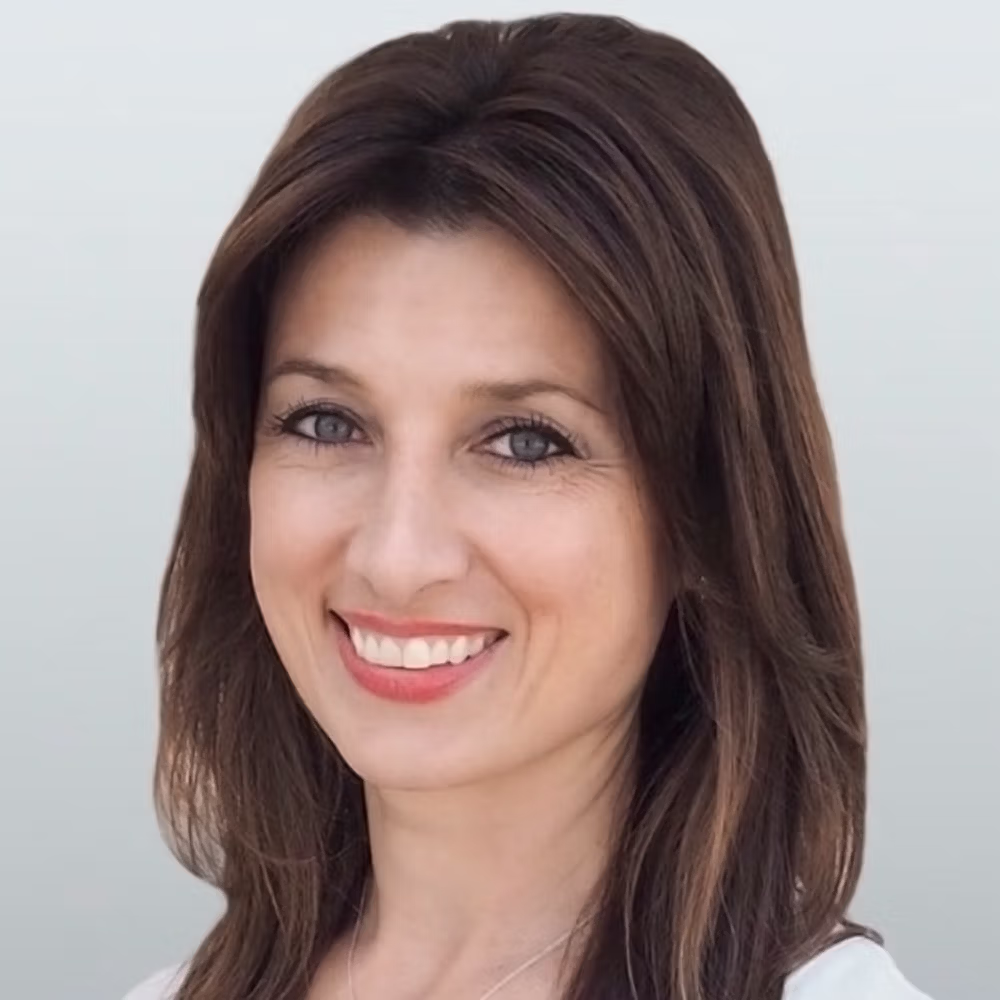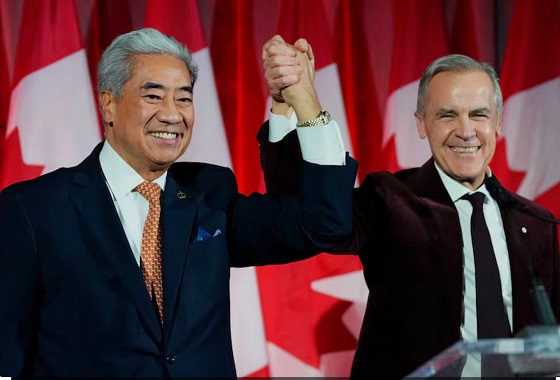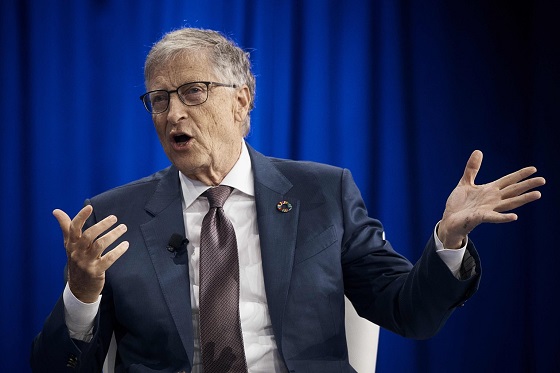Brownstone Institute
The Most Important Meeting in the History of the World That Never Happened
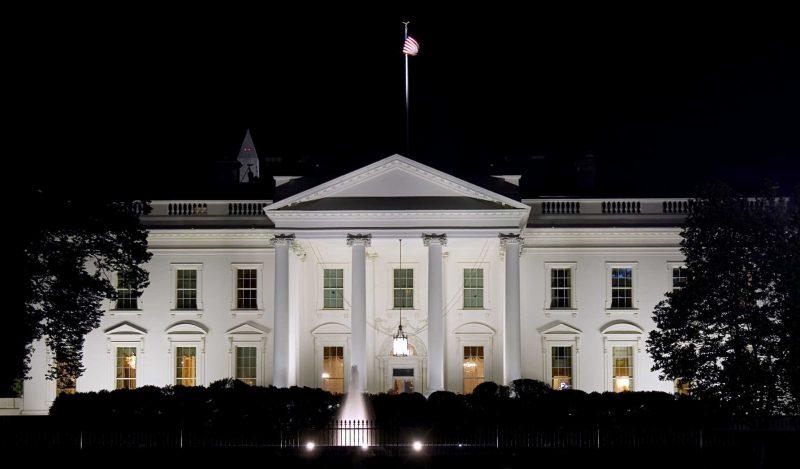
From the Brownstone Institute
BY
There was a brief moment in Spring 2020, just a few days into “15 Days to Slow the Spread,” when we had a chance to change our trajectory. A distinct inflection point where if we had done just one thing differently, and caught the crazy COVID coaster before it got locked in its tracks, things could have turned out very differently over these last three plus years.
In the third week of March a secret emergency meeting was scheduled to take place between President Donald Trump, the COVID Task Force, and eight of the most eminently qualified public health experts in the world. This elite group of scientists was slated to present the highest-level decision-makers in our government with an alternative POV to lock down; a much-needed second opinion on national turtling.
We didn’t know it at the time, but this would have been the most important meeting of the COVID-19 era. But it never occurred.
What happened?
This has been a nagging question ever since July 27, 2020 when BuzzFeed News broke the news in an article by Stephanie M. Lee: “An Elite Group Of Scientists Tried To Warn Trump Against Lockdowns In March.” In her article Ms. Lee framed this aborted meeting as a dodged bullet, and the scientists as unhelpful meddlers, but for many of us the fact that there even was an attempted meeting like this was extremely heartening.
Because for months we had been led to believe that this novel, authoritarian response was unanimous, that “the science was settled” and yet here we find out that some of the most famous scientists in the world didn’t quite agree with “the science.” Not only that, but they had major issues with the process, they questioned the data, and they were extremely concerned about the downstream, long-term effects to our society from locking down. But Lee’s article didn’t even attempt to answer the one big glaring, nagging question left in her article: “Why?”
If you remember back to Late Winter/Early Spring 2020 the entire connected world went from “Hey, no big deal,” to “Hey, what’s going on in Italy?” to “Holy shit, we’re all gonna die!” in a matter of just a few weeks. COVID mania quickly captured us all, and by early March we were suddenly armchair experts on cytokine storms and case counts, and even your aunt Glenda posted that “Flatten the Curve” Washington Postarticle on Facebook and suddenly we found ourselves on March 15, 2020 watching in slack-jawed horror as Trump, Fauci, and Birx stood up there, telling us their bright idea was to shut down the entire country. For just two weeks they said. To protect our hospitals from “the spike” they said. If we didn’t, they said, two million people would surely die.
And who were we to argue? They had a powerpoint presentation with logos and charts, the laughable Imperial College London model, and of course the force of government behind them.
The national reaction was… curious. Some of us, but not nearly enough, were horrified; viscerally and vehemently opposed to this entire concept on scientific, moral and legal grounds. But we were grossly outnumbered. The vast majority of the population was really scared, and poll after poll indicated they were in favor of these unprecedented, draconian measures. Some of our fellow humans even seemed downright giddy at the prospect of hunkering down indefinitely, until it was “safe” to come out; whatever the shifting daily definition of “safe” was, and whatever the ultimate societal cost.
Although lockdown was presented to us that day as a fait accompli, some of us were undeterred. We spoke up to our friends, families, and coworkers and spoke out on social media, writing letters, holding protests, doing whatever we could to to reason, educate, even plead with our local representatives, leaders and opinion-makers not to continue down this novel path. But to no avail. “Shut up,” they said.
We were just normies, after all, and at the time there were very few actual “experts” on our side. Luckily for us, one of those few was John Ioannidis, an immensely respected physician, scientist, statistician, mathematician, Stanford professor, and writer who was renowned for his works in–get this–epidemiology and evidence-based medicine. Ioannidis was the perfect voice to counter the runaway COVID-19 pandemic response narrative.
And speak up he did. On March 17, 2020 Ioannidis published a groundbreaking STAT article “A fiasco in the making? As the coronavirus pandemic takes hold, we are making decisions without reliable data.” He asked aloud what many of us were wondering privately: would this fiat public health response be a “once-in-a-century evidence fiasco?”
In his article Ioannidis pointed out that all the COVID data to date was actually “of very bad quality,” and we were making monumental decisions daily based on dangerously unreliable information. He also pointed out that the chances of dying for those infected (the Infection Fatality Rate) had to be be much lower than the ridiculous 3.4 percent Case Fatality Rate (CFR) publicly announced by the WHO; his working theory being that many more people had been infected without noticing it, or without being tested.
Ioannidis’ rational and well-reasoned POV in STAT ran squarely against the official narrative, and garnered immediate pushback from “the establishment.” Thankfully, John Ioannidis is a rare brave person, so he promptly ignored the narrative police and submitted his case directly to the top: President Donald J. Trump.
In his letter to the White House Ioannidis warned Trump against “shutting down the country for a very long time and jeopardizing so many lives in doing this” and he requested an emergency meeting to provide all the key stakeholders in the Executive Branch a much-needed second opinion, delivered from a “diverse panel of the top experts in the world.”
This was his letter:
“Dr Ioannidis (bio below) is assembling a group of world renowned scientists who can contribute insights to help solve the major challenge of COVID-19, by intensifying efforts to understand the denominator of infected people (much larger than what is documented to-date) and having a science- and data-informed, targeted approach rather than shutting down the country for very long time and jeopardizing so many lives in doing this. The aim is to identify the best way to both save more lives and avoid serious damage to the US economy using the most reliable data, since the infection rate may be off by a very large factor versus the number of currently documented cases. The scientists are willing to come to the White House personally or join by video conference.”
The proposed panel consisted of:
Jeffrey Klausner, MD MPH – Professor of Clinical Population and Public Health Sciences at USC currently (was Professor at UCLA in 2020).
Art Reingold – Professor of Epidemiology in the School of Public Health at Berkeley.
Jay Bhattacharya, MD, PhD – Professor of Medicine at Stanford University, research associate at the National Bureau of Economics Research.
James Fowler, PhD – Professor of Infectious Diseases and Global Public Health at UCSD
Sten H. Vermund, MD, PhD – Dean of the Yale School of Public Health (2017-2022)
David L. Katz, MD, MPH – founder of Yale University’s Yale-Griffin Prevention Research Center.
Michael Levitt, PhD – Nobel Prize Winner, Professor of Structural Biology at Stanford.
Daniel B. Jernigan, MD, MPH – Director of the Influenza Division in the National Center for Immunization and Respiratory Diseases (NCIRD) at CDC.
On amazingly short notice, Ioannidis had managed to assemble a literal COVID dream team. These scientists were the real deal: actual bonafide “experts” in a landscape of cosplayers and clout chasers.
When I asked Ioannidis about his historic effort to have an open dialogue with the White House and COVID Task Force in March 2020 he replied to me by e-mail:
“The effort was to create a team with top scientists in epidemiology, public health, health policy, population sciences, social sciences, social networks, computational modeling, healthcare, economics, and respiratory infections. We wanted to help the leadership and the Task Force. The Task Force had stellar, world-caliber scientists like Fauci, Redfield, and Birx, but their otherwise amazing expertise did not cover specifically these areas.”
To that end, John Ioannidis didn’t just pick names out of a hat, he curated this group for maximum positive impact. This was not only an extremely talented group, it was an extremely diverse group. They didn’t all agree on what the response to COVID should be, either. But in the interest of faithfully representing all possible angles and views, Ioannidis insisted they take part. In fact Reinhold and Vermund were recruited by Ioannidis precisely because they didn’t agree with him on how to handle things, and none of the eight were political actors. Despite insinuations to the contrary.
“I have absolutely no clue what the members of the team voted! And it really does not (should not) matter.”
The idea of an emergency White House meeting like this was especially radical because at that time any discussion to the contrary was considered taboo. But lockdown was the most important public health decision in modern human history: one that would potentially affect the future of the entire planet. So why not take a moment to hash it out, with some of the smartest and most qualified people on the planet, and make sure we were making the correct decision?
As of March 24, 2020 the calendars had been aligned and this landmark meeting seemed to be a “go.”
“Request has gone in officially, waiting to hear…”
Then… nothing.
Radio silence.
Finally, on March 28 Ioannidis emailed the group:
“Re: meeting with the President in D.C. Have kept asking/putting gentle pressure, I think our ideas have infiltrated the White House regardless, I hope to have more news on Monday…”
Although Stephanie M. Lee of Buzzfeed News insinuated this was Ioannidis’ way of claiming victory, when asked about it he was keen to clarify:
“I am self-sarcastic here, as it was apparent that we were NOT being heard and other people in the team were also self-sarcastic in saying that our proposal had hit on a wall and bounced.”
So that the heck happened between March 24 and March 28? How did this historic meeting go from “on” to “Oh, never mind?”
What on earth could’ve nuked it?
Or… who?
“I initially communicated myself with a White House person, there is no need to create trouble for that person by naming, I believe that person made a well-intentioned effort, even if it did not work. I don’t know if the message did reach Trump or not and I have no clue who cancelled the meeting and why it came to naught.”
A benign answer could simply be that “Shit happens.” After all, people cancel meetings all the time, especially Presidents and their handlers in the middle of a political and public health maelstrom.
But the meeting could have also been canceled for a host of other reasons, especially political ones, and there were in fact a few key events that occurred in those key 4 gap days that may have had an impact:
March 24, 2020 Trump murmured his famous “Open by Easter” viral bite in a walking ‘n talking interview with Fox’s Bill Hemmer. Which, interestingly, is often confused with Trump wanting to open “early,” when in fact Easter 2020 landed on April 15: a full 15 days past the promised end of the first official “15 Days.” So in effect Trump was already promising to extend the lockdown:
TRUMP: …I’d love to have an open by Easter. Okay?
HEMMER: Oh, wow. Okay.
TRUMP: I would to have it open by Easter. I will — I will tell you that right now. I would love to have that — it’s such an important day for other reasons, but I’ll make it an important day for this too. I would love to have the country opened up and just raring to go by Easter.
HEMMER: That’s April 12th. So we will watch and see what happens.
TRUMP: Good.
Also on March 24, 2020 India officially declared a national 21-day lockdown, which was longer than our puny #15Days, and their lockdown would affect over 1.3 billion people as opposed to our few hundred million. This was framed as “India takes COVID super-seriously,” of course.
On March 25th, 2020 the US Senate passed the CARES Act, a stonking $2.2 trillion economic “stimulus bill” which promised to go directly to adversely affected individuals, businesses, schools and hospitals and never ever ever be wasted, misappropriated, or brazenly stolen by ne’er-do-wells.
Prince Charles tested positive for COVID-19 on March 25th, 2020 as well. And he died. No, wait, my bad, he experienced mild symptoms and self-isolated with servants at his residence in Scotland.
On March 26, 2020 three pretty big-deal things happened. One, the US Department of Labor reported that 3.3 million people filed for unemployment benefits, making it the highest number of initial jobless claims in American history at the time. It was a big story at the time. But what also happened on March 26, 2020is that the US became “the country with the most confirmed COVID cases,” officially surpassing China and Italy for that coveted top spot.
March 26, 2020 also featured the WHO’s virtual “Extraordinary Leaders’ Summit on COVID-19” where World Health Organization Director-General Tedros announced:
“We are at war with a virus that threatens to tear us apart – if we let it. Almost half a million people have already been infected, and more than 20,000 have lost their lives. The pandemic is accelerating at an exponential rate…Without aggressive action in all countries, millions could die. This is a global crisis that demands a global response…Fight hard. Fight like hell. Fight like your lives depend on it – because they do. The best and only way to protect life, livelihoods and economies is to stop the virus…Many of your countries have imposed drastic social and economic restrictions, shutting schools and businesses, and asking people to stay at home. These measures will take some of the heat out of the epidemic, but they will not extinguish it. We must do more.”
Could any of these happenings have caused the Trump camp to say, “We’re good. Thanks for the offer anyway, nerds?”
Who knows.
But the next explanation is far more interesting, and more conspiratorial: was there someone in or near the White House that put the kibosh on this thing? Did Fauci and/or Birx convince Kushner to tell Meadows to tell Trump to tell his secretary to nix the meeting?
Hmmmm. If only there was a way to find this out.
“Indeed, I would be the first to love to know what happened!”
In the aforementioned BuzzFeed article “An Elite Group Of Scientists Tried To Warn Trump Against Lockdowns In March” author Stephanie Lee presented only a select few “obtained” emails, to make her case.
So I “obtained” the same emails via FOIA to the public universities, and, really, there’s nothing in those emails than a group of mutually-respected peers desperately trying to coordinate and contribute to this burgeoning national disaster; these were all people desperately trying to do the right thing for the country, and the world. They just wanted to help.
For what it’s worth, these emails are an incredible time capsule documenting the events and societal tenor of that important time, and are presented here, in their entirety. Whatever caused this critically important meeting to be canceled, it’s now quite apparent that it would’ve been better had that meeting taken place.
Because even under the most gracious definitions of “lockdown” our public health reaction to COVID was a colossal mistake. A massive abysmal failure, based on any neutral metric. Lockdown failed on stopping the virus, it failed on overall health outcomes, it failed on the economy, it failed on “equity,” it failed our kids and perhaps most tellingly it failed our principles. In the future there will be entire sections of libraries dedicated to the mind-boggling extent of the destruction caused by these panicked, pseudoscientific public-health decisions. Decisions that were forced on us, without even so much as a show vote.
Much less a proper discussion. And that’s what this meeting would have been: a discussion. An opportunity to expose the Leader of the Free World to a different and better set of ideas on how to handle the COVID-19 pandemic. The fact is that, in the third week of March 2020, we were all unceremoniously denied a basic medical, human right: an informed second opinion.
Brownstone Institute
The Unmasking of Vaccine Science

From the Brownstone Institute
By
I recently purchased Aaron Siri’s new book Vaccines, Amen. As I flipped though the pages, I noticed a section devoted to his now-famous deposition of Dr Stanley Plotkin, the “godfather” of vaccines.
I’d seen viral clips circulating on social media, but I had never taken the time to read the full transcript — until now.
Siri’s interrogation was methodical and unflinching…a masterclass in extracting uncomfortable truths.
A Legal Showdown
In January 2018, Dr Stanley Plotkin, a towering figure in immunology and co-developer of the rubella vaccine, was deposed under oath in Pennsylvania by attorney Aaron Siri.
The case stemmed from a custody dispute in Michigan, where divorced parents disagreed over whether their daughter should be vaccinated. Plotkin had agreed to testify in support of vaccination on behalf of the father.
What followed over the next nine hours, captured in a 400-page transcript, was extraordinary.
Plotkin’s testimony revealed ethical blind spots, scientific hubris, and a troubling indifference to vaccine safety data.
He mocked religious objectors, defended experiments on mentally disabled children, and dismissed glaring weaknesses in vaccine surveillance systems.
A System Built on Conflicts
From the outset, Plotkin admitted to a web of industry entanglements.
He confirmed receiving payments from Merck, Sanofi, GSK, Pfizer, and several biotech firms. These were not occasional consultancies but long-standing financial relationships with the very manufacturers of the vaccines he promoted.
Plotkin appeared taken aback when Siri questioned his financial windfall from royalties on products like RotaTeq, and expressed surprise at the “tone” of the deposition.
Siri pressed on: “You didn’t anticipate that your financial dealings with those companies would be relevant?”
Plotkin replied: “I guess, no, I did not perceive that that was relevant to my opinion as to whether a child should receive vaccines.”
The man entrusted with shaping national vaccine policy had a direct financial stake in its expansion, yet he brushed it aside as irrelevant.
Contempt for Religious Dissent
Siri questioned Plotkin on his past statements, including one in which he described vaccine critics as “religious zealots who believe that the will of God includes death and disease.”
Siri asked whether he stood by that statement. Plotkin replied emphatically, “I absolutely do.”
Plotkin was not interested in ethical pluralism or accommodating divergent moral frameworks. For him, public health was a war, and religious objectors were the enemy.
He also admitted to using human foetal cells in vaccine production — specifically WI-38, a cell line derived from an aborted foetus at three months’ gestation.
Siri asked if Plotkin had authored papers involving dozens of abortions for tissue collection. Plotkin shrugged: “I don’t remember the exact number…but quite a few.”
Plotkin regarded this as a scientific necessity, though for many people — including Catholics and Orthodox Jews — it remains a profound moral concern.
Rather than acknowledging such sensitivities, Plotkin dismissed them outright, rejecting the idea that faith-based values should influence public health policy.
That kind of absolutism, where scientific aims override moral boundaries, has since drawn criticism from ethicists and public health leaders alike.
As NIH director Jay Bhattacharya later observed during his 2025 Senate confirmation hearing, such absolutism erodes trust.
“In public health, we need to make sure the products of science are ethically acceptable to everybody,” he said. “Having alternatives that are not ethically conflicted with foetal cell lines is not just an ethical issue — it’s a public health issue.”
Safety Assumed, Not Proven
When the discussion turned to safety, Siri asked, “Are you aware of any study that compares vaccinated children to completely unvaccinated children?”
Plotkin replied that he was “not aware of well-controlled studies.”
Asked why no placebo-controlled trials had been conducted on routine childhood vaccines such as hepatitis B, Plotkin said such trials would be “ethically difficult.”
That rationale, Siri noted, creates a scientific blind spot. If trials are deemed too unethical to conduct, then gold-standard safety data — the kind required for other pharmaceuticals — simply do not exist for the full childhood vaccine schedule.
Siri pointed to one example: Merck’s hepatitis B vaccine, administered to newborns. The company had only monitored participants for adverse events for five days after injection.
Plotkin didn’t dispute it. “Five days is certainly short for follow-up,” he admitted, but claimed that “most serious events” would occur within that time frame.
Siri challenged the idea that such a narrow window could capture meaningful safety data — especially when autoimmune or neurodevelopmental effects could take weeks or months to emerge.
Siri pushed on. He asked Plotkin if the DTaP and Tdap vaccines — for diphtheria, tetanus and pertussis — could cause autism.
“I feel confident they do not,” Plotkin replied.
But when shown the Institute of Medicine’s 2011 report, which found the evidence “inadequate to accept or reject” a causal link between DTaP and autism, Plotkin countered, “Yes, but the point is that there were no studies showing that it does cause autism.”
In that moment, Plotkin embraced a fallacy: treating the absence of evidence as evidence of absence.
“You’re making assumptions, Dr Plotkin,” Siri challenged. “It would be a bit premature to make the unequivocal, sweeping statement that vaccines do not cause autism, correct?”
Plotkin relented. “As a scientist, I would say that I do not have evidence one way or the other.”
The MMR
The deposition also exposed the fragile foundations of the measles, mumps, and rubella (MMR) vaccine.
When Siri asked for evidence of randomised, placebo-controlled trials conducted before MMR’s licensing, Plotkin pushed back: “To say that it hasn’t been tested is absolute nonsense,” he said, claiming it had been studied “extensively.”
Pressed to cite a specific trial, Plotkin couldn’t name one. Instead, he gestured to his own 1,800-page textbook: “You can find them in this book, if you wish.”
Siri replied that he wanted an actual peer-reviewed study, not a reference to Plotkin’s own book. “So you’re not willing to provide them?” he asked. “You want us to just take your word for it?”
Plotkin became visibly frustrated.
Eventually, he conceded there wasn’t a single randomised, placebo-controlled trial. “I don’t remember there being a control group for the studies, I’m recalling,” he said.
The exchange foreshadowed a broader shift in public discourse, highlighting long-standing concerns that some combination vaccines were effectively grandfathered into the schedule without adequate safety testing.
In September this year, President Trump called for the MMR vaccine to be broken up into three separate injections.
The proposal echoed a view that Andrew Wakefield had voiced decades earlier — namely, that combining all three viruses into a single shot might pose greater risk than spacing them out.
Wakefield was vilified and struck from the medical register. But now, that same question — once branded as dangerous misinformation — is set to be re-examined by the CDC’s new vaccine advisory committee, chaired by Martin Kulldorff.
The Aluminium Adjuvant Blind Spot
Siri next turned to aluminium adjuvants — the immune-activating agents used in many childhood vaccines.
When asked whether studies had compared animals injected with aluminium to those given saline, Plotkin conceded that research on their safety was limited.
Siri pressed further, asking if aluminium injected into the body could travel to the brain. Plotkin replied, “I have not seen such studies, no, or not read such studies.”
When presented with a series of papers showing that aluminium can migrate to the brain, Plotkin admitted he had not studied the issue himself, acknowledging that there were experiments “suggesting that that is possible.”
Asked whether aluminium might disrupt neurological development in children, Plotkin stated, “I’m not aware that there is evidence that aluminum disrupts the developmental processes in susceptible children.”
Taken together, these exchanges revealed a striking gap in the evidence base.
Compounds such as aluminium hydroxide and aluminium phosphate have been injected into babies for decades, yet no rigorous studies have ever evaluated their neurotoxicity against an inert placebo.
This issue returned to the spotlight in September 2025, when President Trump pledged to remove aluminium from vaccines, and world-leading researcher Dr Christopher Exley renewed calls for its complete reassessment.
A Broken Safety Net
Siri then turned to the reliability of the Vaccine Adverse Event Reporting System (VAERS) — the primary mechanism for collecting reports of vaccine-related injuries in the United States.
Did Plotkin believe most adverse events were captured in this database?
“I think…probably most are reported,” he replied.
But Siri showed him a government-commissioned study by Harvard Pilgrim, which found that fewer than 1% of vaccine adverse events are reported to VAERS.
“Yes,” Plotkin said, backtracking. “I don’t really put much faith into the VAERS system…”
Yet this is the same database officials routinely cite to claim that “vaccines are safe.”
Ironically, Plotkin himself recently co-authored a provocative editorial in the New England Journal of Medicine, conceding that vaccine safety monitoring remains grossly “inadequate.”
Experimenting on the Vulnerable
Perhaps the most chilling part of the deposition concerned Plotkin’s history of human experimentation.
“Have you ever used orphans to study an experimental vaccine?” Siri asked.
“Yes,” Plotkin replied.
“Have you ever used the mentally handicapped to study an experimental vaccine?” Siri asked.
“I don’t recollect…I wouldn’t deny that I may have done so,” Plotkin replied.
Siri cited a study conducted by Plotkin in which he had administered experimental rubella vaccines to institutionalised children who were “mentally retarded.”
Plotkin stated flippantly, “Okay well, in that case…that’s what I did.”
There was no apology, no sign of ethical reflection — just matter-of-fact acceptance.
Siri wasn’t done.
He asked if Plotkin had argued that it was better to test on those “who are human in form but not in social potential” rather than on healthy children.
Plotkin admitted to writing it.
Siri established that Plotkin had also conducted vaccine research on the babies of imprisoned mothers, and on colonised African populations.
Plotkin appeared to suggest that the scientific value of such studies outweighed the ethical lapses—an attitude that many would interpret as the classic ‘ends justify the means’ rationale.
But that logic fails the most basic test of informed consent. Siri asked whether consent had been obtained in these cases.
“I don’t remember…but I assume it was,” Plotkin said.
Assume?
This was post-Nuremberg research. And the leading vaccine developer in America couldn’t say for sure whether he had properly informed the people he experimented on.
In any other field of medicine, such lapses would be disqualifying.
A Casual Dismissal of Parental Rights
Plotkin’s indifference to experimenting on disabled children didn’t stop there.
Siri asked whether someone who declined a vaccine due to concerns about missing safety data should be labelled “anti-vax.”
Plotkin replied, “If they refused to be vaccinated themselves or refused to have their children vaccinated, I would call them an anti-vaccination person, yes.”
Plotkin was less concerned about adults making that choice for themselves, but he had no tolerance for parents making those choices for their own children.
“The situation for children is quite different,” said Plotkin, “because one is making a decision for somebody else and also making a decision that has important implications for public health.”
In Plotkin’s view, the state held greater authority than parents over a child’s medical decisions — even when the science was uncertain.
The Enabling of Figures Like Plotkin
The Plotkin deposition stands as a case study in how conflicts of interest, ideology, and deference to authority have corroded the scientific foundations of public health.
Plotkin is no fringe figure. He is celebrated, honoured, and revered. Yet he promotes vaccines that have never undergone true placebo-controlled testing, shrugs off the failures of post-market surveillance, and admits to experimenting on vulnerable populations.
This is not conjecture or conspiracy — it is sworn testimony from the man who helped build the modern vaccine program.
Now, as Health Secretary Robert F. Kennedy, Jr. reopens long-dismissed questions about aluminium adjuvants and the absence of long-term safety studies, Plotkin’s once-untouchable legacy is beginning to fray.
Republished from the author’s Substack
Brownstone Institute
Bizarre Decisions about Nicotine Pouches Lead to the Wrong Products on Shelves

From the Brownstone Institute
A walk through a dozen convenience stores in Montgomery County, Pennsylvania, says a lot about how US nicotine policy actually works. Only about one in eight nicotine-pouch products for sale is legal. The rest are unauthorized—but they’re not all the same. Some are brightly branded, with uncertain ingredients, not approved by any Western regulator, and clearly aimed at impulse buyers. Others—like Sweden’s NOAT—are the opposite: muted, well-made, adult-oriented, and already approved for sale in Europe.
Yet in the United States, NOAT has been told to stop selling. In September 2025, the Food and Drug Administration (FDA) issued the company a warning letter for offering nicotine pouches without marketing authorization. That might make sense if the products were dangerous, but they appear to be among the safest on the market: mild flavors, low nicotine levels, and recyclable paper packaging. In Europe, regulators consider them acceptable. In America, they’re banned. The decision looks, at best, strange—and possibly arbitrary.
What the Market Shows
My October 2025 audit was straightforward. I visited twelve stores and recorded every distinct pouch product visible for sale at the counter. If the item matched one of the twenty ZYN products that the FDA authorized in January, it was counted as legal. Everything else was counted as illegal.
Two of the stores told me they had recently received FDA letters and had already removed most illegal stock. The other ten stores were still dominated by unauthorized products—more than 93 percent of what was on display. Across all twelve locations, about 12 percent of products were legal ZYN, and about 88 percent were not.
The illegal share wasn’t uniform. Many of the unauthorized products were clearly high-nicotine imports with flashy names like Loop, Velo, and Zimo. These products may be fine, but some are probably high in contaminants, and a few often with very high nicotine levels. Others were subdued, plainly meant for adult users. NOAT was a good example of that second group: simple packaging, oat-based filler, restrained flavoring, and branding that makes no effort to look “cool.” It’s the kind of product any regulator serious about harm reduction would welcome.
Enforcement Works
To the FDA’s credit, enforcement does make a difference. The two stores that received official letters quickly pulled their illegal stock. That mirrors the agency’s broader efforts this year: new import alerts to detain unauthorized tobacco products at the border (see also Import Alert 98-06), and hundreds of warning letters to retailers, importers, and distributors.
But effective enforcement can’t solve a supply problem. The list of legal nicotine-pouch products is still extremely short—only a narrow range of ZYN items. Adults who want more variety, or stores that want to meet that demand, inevitably turn to gray-market suppliers. The more limited the legal catalog, the more the illegal market thrives.
Why the NOAT Decision Appears Bizarre
The FDA’s own actions make the situation hard to explain. In January 2025, it authorized twenty ZYN products after finding that they contained far fewer harmful chemicals than cigarettes and could help adult smokers switch. That was progress. But nine months later, the FDA has approved nothing else—while sending a warning letter to NOAT, arguably the least youth-oriented pouch line in the world.
The outcome is bad for legal sellers and public health. ZYN is legal; a handful of clearly risky, high-nicotine imports continue to circulate; and a mild, adult-market brand that meets European safety and labeling rules is banned. Officially, NOAT’s problem is procedural—it lacks a marketing order. But in practical terms, the FDA is punishing the very design choices it claims to value: simplicity, low appeal to minors, and clean ingredients.
This approach also ignores the differences in actual risk. Studies consistently show that nicotine pouches have far fewer toxins than cigarettes and far less variability than many vapes. The biggest pouch concerns are uneven nicotine levels and occasional traces of tobacco-specific nitrosamines, depending on manufacturing quality. The serious contamination issues—heavy metals and inconsistent dosage—belong mostly to disposable vapes, particularly the flood of unregulated imports from China. Treating all “unauthorized” products as equally bad blurs those distinctions and undermines proportional enforcement.
A Better Balance: Enforce Upstream, Widen the Legal Path
My small Montgomery County survey suggests a simple formula for improvement.
First, keep enforcement targeted and focused on suppliers, not just clerks. Warning letters clearly change behavior at the store level, but the biggest impact will come from auditing distributors and importers, and stopping bad shipments before they reach retail shelves.
Second, make compliance easy. A single-page list of authorized nicotine-pouch products—currently the twenty approved ZYN items—should be posted in every store and attached to distributor invoices. Point-of-sale systems can block barcodes for anything not on the list, and retailers could affirm, once a year, that they stock only approved items.
Third, widen the legal lane. The FDA launched a pilot program in September 2025 to speed review of new pouch applications. That program should spell out exactly what evidence is needed—chemical data, toxicology, nicotine release rates, and behavioral studies—and make timely decisions. If products like NOAT meet those standards, they should be authorized quickly. Legal competition among adult-oriented brands will crowd out the sketchy imports far faster than enforcement alone.
The Bottom Line
Enforcement matters, and the data show it works—where it happens. But the legal market is too narrow to protect consumers or encourage innovation. The current regime leaves a few ZYN products as lonely legal islands in a sea of gray-market pouches that range from sensible to reckless.
The FDA’s treatment of NOAT stands out as a case study in inconsistency: a quiet, adult-focused brand approved in Europe yet effectively banned in the US, while flashier and riskier options continue to slip through. That’s not a public-health victory; it’s a missed opportunity.
If the goal is to help adult smokers move to lower-risk products while keeping youth use low, the path forward is clear: enforce smartly, make compliance easy, and give good products a fair shot. Right now, we’re doing the first part well—but failing at the second and third. It’s time to fix that.
-

 Crime2 hours ago
Crime2 hours agoBrown University shooter dead of apparent self-inflicted gunshot wound
-

 Business2 days ago
Business2 days agoOttawa Pretends To Pivot But Keeps Spending Like Trudeau
-

 Business13 hours ago
Business13 hours agoCanada Hits the Brakes on Population
-
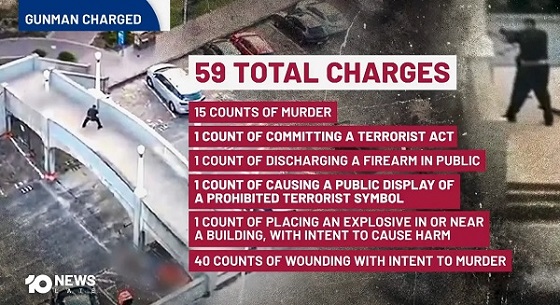
 Crime1 day ago
Crime1 day agoThe Uncomfortable Demographics of Islamist Bloodshed—and Why “Islamophobia” Deflection Increases the Threat
-
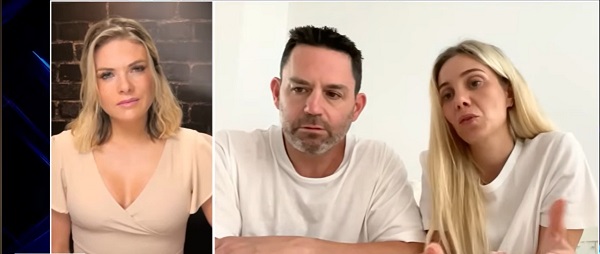
 Crime1 day ago
Crime1 day agoBondi Beach Survivor Says Cops Prevented Her From Fighting Back Against Terrorists
-

 International1 day ago
International1 day agoHouse Rejects Bipartisan Attempt To Block Trump From Using Military Force Against Venezuela
-
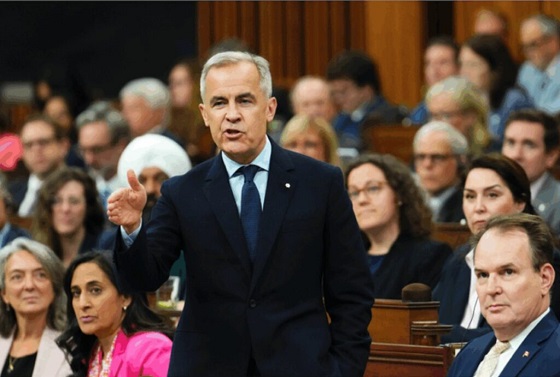
 Energy2 days ago
Energy2 days agoLiberals Twisted Themselves Into Pretzels Over Their Own Pipeline MOU
-

 Frontier Centre for Public Policy15 hours ago
Frontier Centre for Public Policy15 hours agoCanada Lets Child-Porn Offenders Off Easy While Targeting Bible Believers



